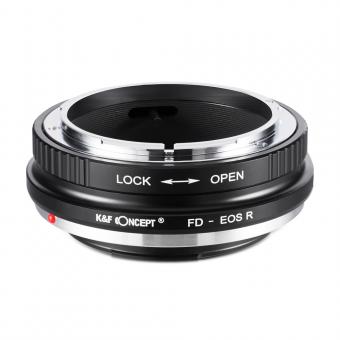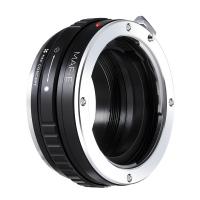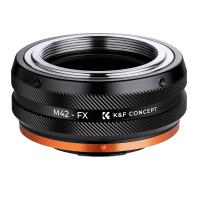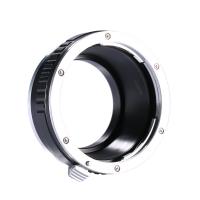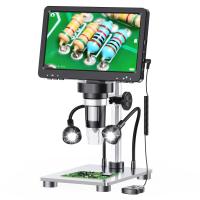Who Built The Microscope ?
The microscope was developed by multiple scientists over time. The first compound microscope was built by Zacharias Janssen and his father Hans in the late 16th century. However, it was Antonie van Leeuwenhoek who made significant improvements to the microscope and is often credited with its invention. He constructed single-lens microscopes and made groundbreaking observations using them in the 17th century.
1、 Hans Lippershey and Zacharias Janssen: Early inventors of the microscope
Hans Lippershey and Zacharias Janssen are often credited as the early inventors of the microscope. These Dutch spectacle makers are believed to have independently developed the first compound microscope around the late 16th century. However, the exact origins of the microscope are still a subject of debate among historians.
Hans Lippershey, a German-born Dutchman, is often associated with the invention of the telescope. While there is no concrete evidence linking him directly to the microscope, his expertise in lens-making and optical instruments makes it plausible that he may have contributed to its development.
Zacharias Janssen, on the other hand, is often credited with creating the first compound microscope. Janssen, also a Dutch spectacle maker, is said to have constructed a device consisting of two lenses that could magnify objects. This invention was a significant breakthrough in the field of microscopy and laid the foundation for further advancements.
It is important to note that the history of scientific inventions is often complex and multifaceted. While Lippershey and Janssen are commonly associated with the microscope's early development, there were likely other inventors and contributors whose names have been lost to history.
In recent years, there has been a growing recognition of the collaborative nature of scientific discoveries. It is now widely acknowledged that scientific progress is often the result of the collective efforts of multiple individuals working in parallel or building upon each other's work. Therefore, while Lippershey and Janssen may have played a significant role in the invention of the microscope, it is likely that their work was part of a broader scientific community's efforts to explore and understand the microscopic world.

2、 Antonie van Leeuwenhoek: Improved and popularized the microscope
Antonie van Leeuwenhoek, a Dutch scientist, is widely credited with improving and popularizing the microscope. Born in 1632, Leeuwenhoek was not formally trained in science but had a keen interest in observing the natural world. He is often referred to as the "Father of Microbiology" due to his groundbreaking discoveries using microscopes.
While Leeuwenhoek did not invent the microscope, he significantly improved its design and functionality. He crafted his own microscopes with remarkable precision, achieving magnifications of up to 300 times. His microscopes featured a single lens, which he ground and polished himself, allowing for clearer and more detailed observations. Leeuwenhoek's microscopes were also equipped with a mechanism to adjust the focus, enabling him to examine specimens at different depths.
Leeuwenhoek's observations revolutionized the field of microbiology. He was the first to describe and document various microorganisms, including bacteria, protozoa, and sperm cells. His meticulous observations of these microscopic organisms laid the foundation for our understanding of the microbial world.
It is important to note that while Leeuwenhoek made significant contributions to microscopy, he was not the sole contributor to its development. The invention of the microscope is generally attributed to the Dutch spectacle makers Zacharias Janssen and his father Hans, who created the first compound microscope in the late 16th century. However, Leeuwenhoek's improvements and his dedication to microscopic observations played a crucial role in advancing the field.
In conclusion, Antonie van Leeuwenhoek improved and popularized the microscope, allowing for groundbreaking discoveries in the field of microbiology. While he did not build the first microscope, his advancements and meticulous observations solidified his place in history as a pioneer in the field of microscopy.

3、 Robert Hooke: Contributed to the development of compound microscopes
Robert Hooke, an English scientist, is widely credited for his contributions to the development of compound microscopes. Born in 1635, Hooke was a polymath who made significant advancements in various scientific fields, including physics, biology, and microscopy.
Hooke's most notable achievement in microscopy was his construction of a compound microscope, which he used to make groundbreaking observations. In 1665, he published his seminal work, "Micrographia," in which he detailed his observations using the microscope. This publication not only showcased Hooke's meticulous drawings of various specimens but also introduced the concept of cells. Hooke coined the term "cell" to describe the small, box-like structures he observed in cork, marking a significant milestone in the understanding of biological structures.
While Hooke is often associated with the development of the compound microscope, it is important to note that he did not invent it. The compound microscope had been in existence for several decades before Hooke's time. However, Hooke's contributions were instrumental in popularizing and advancing the use of the microscope for scientific research.
In recent years, there has been some debate regarding the true inventor of the compound microscope. Some historians argue that Dutch scientist Zacharias Janssen and his father, Hans Janssen, should be credited with its invention. The Janssens were spectacle makers who are believed to have created the first compound microscope around 1590. However, due to limited documentation from that time, it is challenging to definitively attribute the invention to any one individual.
In conclusion, while Robert Hooke did not build the first compound microscope, he played a crucial role in its development and popularization. His observations and discoveries using the microscope, particularly his concept of cells, have had a lasting impact on the field of biology.

4、 Ernst Abbe: Developed the theory of microscope optics
Ernst Abbe, a German physicist and mathematician, played a crucial role in the development of microscope optics. While he did not physically build the microscope himself, Abbe's theoretical work laid the foundation for the modern microscope.
In the late 19th century, Abbe collaborated with Carl Zeiss, a skilled optician, to improve the performance of microscopes. Abbe's most significant contribution was the development of the Abbe sine condition, which established the relationship between the numerical aperture of a lens and the angle of light entering it. This breakthrough allowed for the correction of optical aberrations, resulting in sharper and more accurate images under the microscope.
Abbe's work also led to the invention of the Abbe condenser, a device that improved the illumination of specimens by focusing light onto the sample. This innovation greatly enhanced the clarity and contrast of microscopic images.
Furthermore, Abbe's theoretical calculations and designs paved the way for the development of oil immersion microscopy, a technique that uses oil with a high refractive index to increase the resolution of the microscope. This breakthrough enabled scientists to observe smaller details and structures with greater precision.
It is important to note that while Abbe's contributions were groundbreaking, the actual construction of microscopes was carried out by skilled craftsmen and engineers, such as Carl Zeiss and his team. These individuals transformed Abbe's theoretical concepts into practical instruments, making microscopy a powerful tool for scientific research.
In summary, while Ernst Abbe did not physically build the microscope himself, his theoretical work and collaboration with Carl Zeiss revolutionized microscope optics. His contributions, including the Abbe sine condition and the Abbe condenser, laid the foundation for modern microscopy and greatly improved the resolution and clarity of microscopic images.














